contents area
Press Release
detail content area
- Date2020-04-03 17:54
- Update2020-04-03 18:01
- DivisionDivision of Risk assessment and International cooperation
- Tel043-719-7556
Updates on COVID-19 in Republic of Korea
3 April 2020
○ As of 0:00, 3 April 2020, a total of 10,062 cases (including 647 imported cases) have been confirmed, of which 6,021 cases have been discharged from isolation. Newly confirmed cases are 86 in total.
[Table 1. Total confirmed and suspected cases]
|
Period (since 3 Jan) |
Total |
Tested positive |
Being tested |
Tested negative |
|||
|
Confirmed |
Discharged |
Isolated |
Deceased |
||||
|
As of 0:00 2 April (Thurs) |
431,743 |
9,976 |
5,828 |
3,979 |
169 |
17,885 |
403,882 |
|
As of 0:00 3 April (Fri) |
443,273 |
10,062 |
6,021 |
3,867 |
174 |
18,908 |
414,303 |
|
Difference |
11,530 |
86 |
193 |
-112 |
5 |
1,023 |
10,421 |
○ Epidemiological links have been found for 83.0% of the total cases; 10.6% are either under investigation or sporadic cases. More details on the epidemiological links within each province or city are shown in Table 2.
○ From Uijeongbu St. Mary’s Hospital in Gyeonggi Province, 5 additional cases were confirmed. In total, 27 cases (patients = 10; staff/workers = 10; family/visitors = 7) have been confirmed since 29 March. Inpatients are in cohort isolation. Contacts are in home quarantine. Investigation into chains of transmission and contacts is underway.
○ In Daegu, from Second Mi-Ju Hospital, 4 additional cases (total 151) were confirmed. From Daesil Convalescent Hospital, 2 additional cases (total 97) were confirmed. From Hanshin Hospital, 1 additional case was confirmed.
○ From Seo Convalescent Hospital in Gyeongbuk Province, 4 additional cases were confirmed. In total, 65 cases (patients = 48; staff/workers = 15; other contacts = 2) have been confirmed since 19 March. (The figures on Table 2 may differ as the table is based on cases reported to KCDC prior to 0:00 of 3 April.)
○ Due to the rise in COVID-19 cases around the world and the rise in imported cases, Korea implemented stronger infectious disease control measures for inbound travelers starting 1 April.
Imported cases in Korea (as of 0:00, 3 April 2020)
|
|
Total |
Region/Country |
Where confirmed |
Nationality |
||||||
|
China |
Asia ex-China |
Europe |
America |
Africa |
Airport |
Community |
Korean |
Other |
||
|
New |
38 |
0 |
3 |
20 |
15 |
0 |
22 |
16 |
36 |
2 |
|
Total |
647 |
17 |
71 |
338 |
218 |
3 |
264 |
383 |
595 |
52 |
|
(2.6%) |
(11.0%) |
(52.2%) |
(33.7%) |
(0.5%) |
(40.8%) |
(59.2%) |
(92.0%) |
(8.0%) |
||
* Figures may change based on findings from ongoing local epidemiological investigation efforts.
○ All inbound travelers entering Korea are required to undergo temperature checks and submit health condition questionnaire.
○ All symptomatic inbound travelers will be tested and wait for the results in airport quarantine station. Persons who test positive will be transferred to hospital or living treatment center. Persons who test negative will be required to home quarantine for 14 days.
○ All asymptomatic inbound travelers will be required to home quarantine for 14 days. Foreigners on short-term visits (who do not have a home in Korea) will be quarantined at facility. Foreigners who boarded from Europe will be tested at airport.
○ Persons arriving from overseas should return home straight after arriving at the airport. They should travel in their own vehicle or designated airport limousine bus or designated KTX train (reserved specifically for this purpose). They are required to sanitize their hands and wear a facemask during movement.
○ The persons under self-quarantine (home quarantine) are required to follow the self-quarantine guidelines provided. They must not share their utensils, towels and other personal belongings with their family, refrain from coming in contact with family members, roommates, or cohabitants. Family members, roommates, or cohabitants should wear a facemask and keep 2 meter distance from the person under self-quarantine, ventilate the living space frequently, and clean all frequently touched surfaces often. If they notice suspected symptoms develop (fever, cough, sore throat, muscle pain, shortness of breath, etc.) they must contact the designated public official or use the self-quarantine app to notify their symptoms and be tested.
○ The Korean government is promoting the Enhanced Social Distancing campaign from 22 March to 5 April. In light of the recent outbreaks related to religious events, the KCDC asked people to practice extra precaution in relation to religious events this weekend.
○ For example, although Manmin Central Church in Seoul moved to online livestreamed service since 6 March, 400 contacts emerged from people who were working to prepare/facilitate online worship, 41 of whom (10%) were confirmed with COVID-19. Also from around 140 contacts, 4 were confirmed.
○ From Kyuam Church in Chungnam Province (which still continued to gather for Sunday service despite social distancing recommendations), 7 members have been confirmed.
○ KCDC advised people to stay home as much as possible during the weekend, refrain from engaging in activities that make it easy to come in close contact with other people in an enclosed space, and maintain good personal hygiene including washing hands and covering coughs/sneezes.
|
Call to actions for all citizens
① Cancel or postpone all non-essential gatherings, dining out, social events, and travel plans. * There have been numerous reports overseas of transmission by eating together. All meetings and events involving sharing a meal should especially be postponed or canceled.
② If you have fever, cough, sore throat, muscle pain, or other respiratory symptoms, do not go to work. Stay home and get sufficient rest.
③ Avoid leaving home except to purchase necessities, to get medical care, or to go to work.
④ Avoid handshakes and other forms of physical contact. Keep a 2-meter distance from each other.
⑤ Wash your hands, cover up your sneezes/coughs, and generally maintain strict personal hygiene.
⑥ Disinfect and ventilate your space every day. |
[Table 2: Regional distribution and epidemiological links of the confirmed cases]
|
Region |
Confirmed cases |
Other major clusters |
||||||||
|
Total |
Imported cases |
Clusters |
Other* |
New cases |
||||||
|
Sub- total |
Shin- cheonji |
Small clusters |
Contacts of confirmed cases |
Imported cases |
||||||
|
Seoul |
506 |
148 |
319 |
7 |
239 |
31 |
42 |
39 |
18 |
Guro-gu call center (98), Dong-an Church-PC Cafe (20), Manmin Central Church (38), etc. |
|
Busan |
122 |
12 |
80 |
12 |
50 |
18 |
0 |
30 |
0 |
Onchun Church (32), Suyeong-gu Kindergarten (5), etc. |
|
Daegu |
6,734 |
7 |
5,986 |
4,478 |
582 |
923 |
3 |
741 |
9 |
Second Mi-Ju Hospital (151), Hansarang Convalescent Hospital (123), Daesil Convalescent Hospital (97), etc. |
|
Incheon |
74 |
27 |
43 |
2 |
33 |
4 |
4 |
4 |
1 |
Guro-gu call center (20), etc. |
|
Gwangju |
26 |
9 |
16 |
9 |
0 |
1 |
6 |
1 |
1 |
|
|
Daejeon |
36 |
6 |
21 |
2 |
11 |
8 |
0 |
9 |
0 |
Korea Forest Engineer Institute (3), etc. |
|
Ulsan |
40 |
9 |
24 |
16 |
1 |
4 |
3 |
7 |
0 |
|
|
Sejong |
46 |
3 |
42 |
1 |
38 |
3 |
0 |
1 |
0 |
Ministry of Oceans and Fisheries (30), gym facilities (8) |
|
Gyeonggi |
539 |
107 |
389 |
29 |
274 |
63 |
23 |
43 |
23 |
Grace River Church in Seongnam (72), Guro-gu call center-Bucheon SaengMyeongSu Church (48), Uijeongbu St. Mary’s Hospital (19), etc. |
|
Gangwon |
41 |
8 |
25 |
17 |
6 |
2 |
0 |
8 |
2 |
Apartments in Wonju City (3), etc. |
|
Chung- |
45 |
4 |
32 |
6 |
18 |
6 |
2 |
9 |
1 |
Goesan-gun Jangyeon-myeon (11) |
|
Chung- |
134 |
8 |
119 |
0 |
118 |
1 |
0 |
7 |
1 |
Gym facilities in Cheonan (103), research center in Seosan (8), etc. |
|
Jeon- buk |
15 |
6 |
3 |
1 |
2 |
0 |
0 |
6 |
1 |
|
|
Jeon- |
15 |
6 |
7 |
1 |
3 |
2 |
1 |
2 |
1 |
Manmin Central Church (2) |
|
Gyeong- |
1,309 |
7 |
1,168 |
562 |
413 |
192 |
1 |
134 |
5 |
Cheongdo Daenam Hospital (120), Bonghwa Pureun Nursing Home (68), pilgrimage to Israel (49), Gyeongsan Seo Convalescent Hospital (58), etc. |
|
Gyeong- |
107 |
11 |
78 |
32 |
41 |
5 |
0 |
18 |
1 |
Geochang Church (10), Geochang Woongyang-myeon (8), Wings Tower (7), etc. |
|
Jeju |
9 |
5 |
0 |
0 |
0 |
0 |
0 |
4 |
0 |
|
|
Airport |
264 |
264 |
0 |
0 |
0 |
0 |
0 |
0 |
22 |
|
|
Total |
10,062 |
647 |
8,349 |
5,176 |
1,825 |
1,263 |
85 |
1,066 |
86 |
|
|
(6.4) |
(83.0) |
(51.4) |
(18.1) |
(12.6) |
(0.8) |
(10.6) |
||||
|
* Not classified into a cluster or under investigation ※ The interim classification is based on the reporting location, which may change depending on further epidemiological investigation. |
||||||||||
○ Nationwide case trends:
[Figures 1-2: Daily and total confirmed cases and their status]
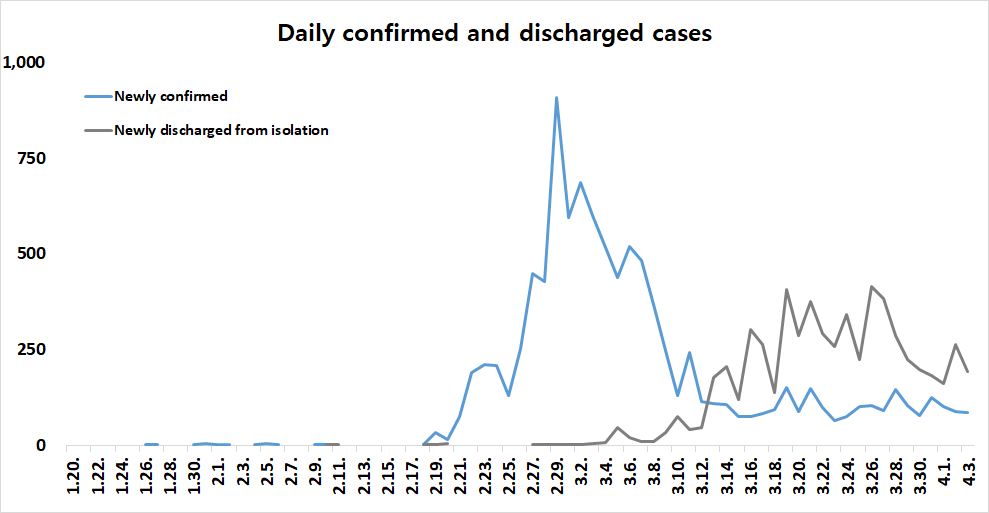
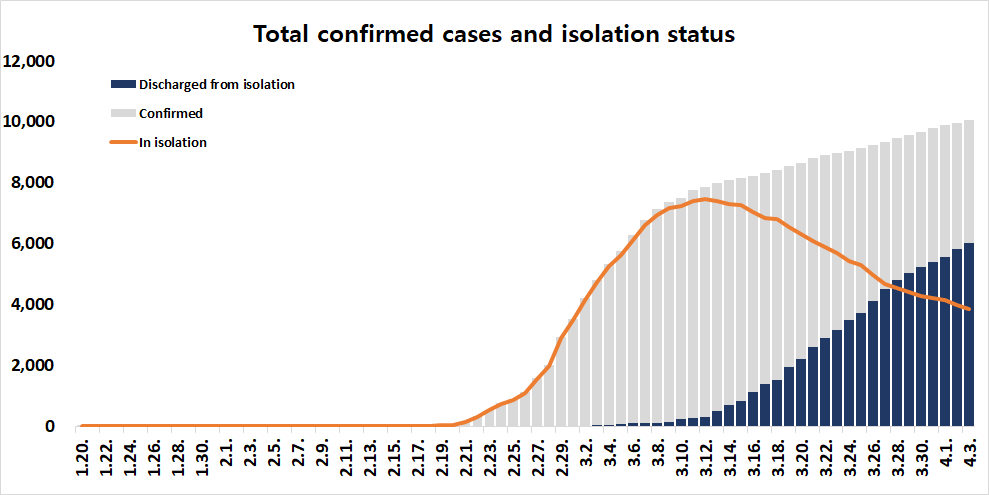
[Figure 3: Distribution of confirmed cases based on location reported]
*Refer to attachment
○ Case distribution data:
[Table 3: Confirmed cases by region]
|
|
Total |
City |
||||||||||||||||
|
Seoul |
Busan |
Daegu |
Incheon |
Gwangju |
Daejeon |
Ulsan |
Sejong |
|||||||||||
|
Isolated |
3,867 |
375 |
31 |
2,179 |
53 |
11 |
18 |
18 |
34 |
|||||||||
|
Discharged |
6,021 |
131 |
88 |
4,434 |
21 |
15 |
18 |
21 |
12 |
|||||||||
|
Deceased |
174 |
0 |
3 |
121 |
0 |
0 |
0 |
1 |
0 |
|||||||||
|
Subtotal |
10,062 |
506 |
122 |
6,734 |
74 |
26 |
36 |
40 |
46 |
|||||||||
|
(Change) |
(86) |
(18) |
- |
(9) |
(1) |
(1) |
- |
- |
- |
|||||||||
|
|
Province |
Other |
||||||||||||||||
|
Gyeonggi |
Gangwon |
Chung-buk |
Chung- nam |
Jeon- buk |
Jeon- nam |
Gyeong- buk |
Gyeong-nam |
Jeju |
Airport screening |
|||||||||
|
Isolated |
347 |
17 |
20 |
37 |
8 |
12 |
402 |
36 |
6 |
263 |
||||||||
|
Discharged |
186 |
23 |
25 |
97 |
7 |
3 |
865 |
71 |
3 |
1 |
||||||||
|
Deceased |
6 |
1 |
0 |
0 |
0 |
0 |
42 |
0 |
0 |
0 |
||||||||
|
Subtotal |
539 |
41 |
45 |
134 |
15 |
15 |
1,309 |
107 |
9 |
264 |
||||||||
|
(Change) |
(23) |
(2) |
(1) |
(1) |
(1) |
(1) |
(5) |
(1) |
- |
(22) |
||||||||
|
|
||||||||||||||||||
[Table 4: Case distribution and incidence rate by region]
|
Region |
# of cases |
(%) |
Incidence rate (per 0.1M) |
Region |
# of cases |
(%) |
Incidence rate (per 0.1M) |
|
Seoul |
506 |
(5.03) |
5.20 |
Gyeonggi |
539 |
(5.36) |
4.07 |
|
Busan |
122 |
(1.21) |
3.58 |
Gangwon |
41 |
(0.41) |
2.66 |
|
Daegu |
6,734 |
(66.93) |
276.38 |
Chungbuk |
45 |
(0.45) |
2.81 |
|
Incheon |
74 |
(0.74) |
2.50 |
Chungnam |
134 |
(1.33) |
6.31 |
|
Gwangju |
26 |
(0.26) |
1.78 |
Jeonbuk |
15 |
(0.15) |
0.83 |
|
Daejeon |
36 |
(0.36) |
2.44 |
Jeonnam |
15 |
(0.15) |
0.80 |
|
Ulsan |
40 |
(0.40) |
3.49 |
Gyeongbuk |
1,309 |
(13.01) |
49.16 |
|
Sejong |
46 |
(0.46) |
13.44 |
Gyeongnam |
107 |
(1.06) |
3.18 |
|
Airport Screening |
264 |
(2.62) |
- |
Jeju |
9 |
(0.09) |
1.34 |
|
|
|
|
|
Total |
10,062 |
(100) |
19.41 |
[Figures 4-7: Daily case trends by region (Daegu, Gyeongbuk, Seoul, Gyeonggi)]
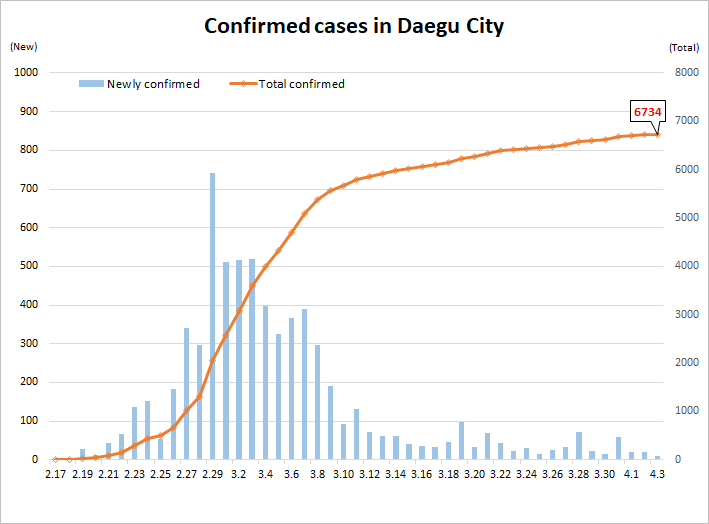
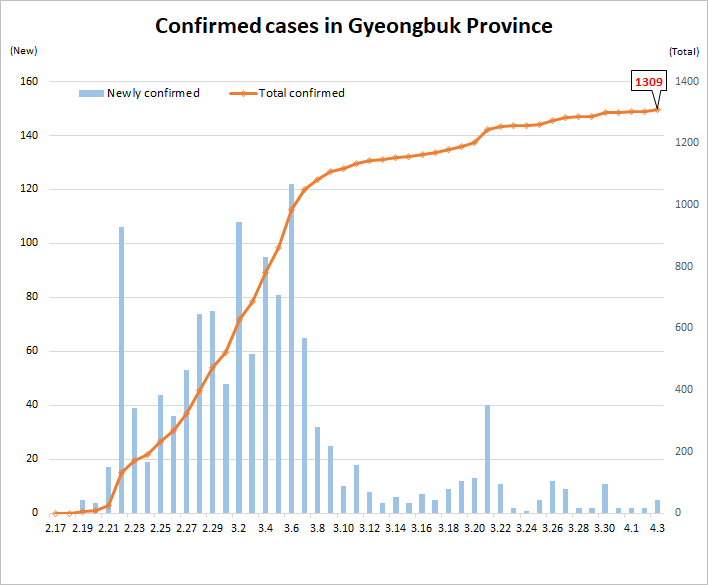
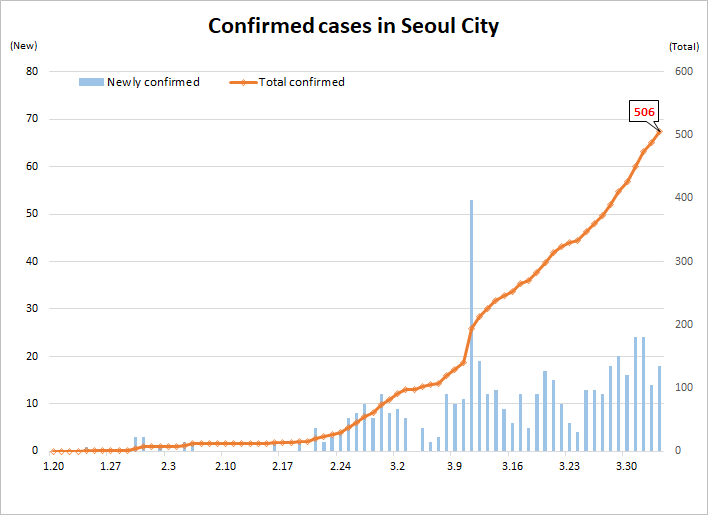
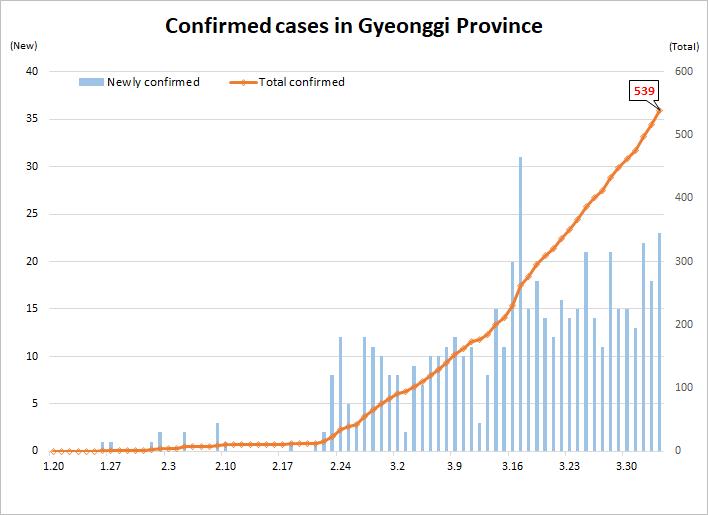
[Table 5: Case distribution by gender and age group]
|
|
Confirmed Cases |
(%) |
Deaths |
(%) |
Fatality rate (%) |
|
|
Total |
10,062 |
(100) |
174 |
(100) |
1.73 |
|
|
Sex |
Male |
4,013 |
(39.88) |
92 |
(52.87) |
2.29 |
|
Female |
6,049 |
(60.12) |
82 |
(47.13) |
1.36 |
|
|
Age |
80 and above |
456 |
(4.53) |
86 |
(49.43) |
18.86 |
|
70-79 |
668 |
(6.64) |
49 |
(28.16) |
7.34 |
|
|
60-69 |
1,266 |
(12.58) |
24 |
(13.79) |
1.90 |
|
|
50-59 |
1,887 |
(18.75) |
12 |
(6.90) |
0.64 |
|
|
40-49 |
1,350 |
(13.42) |
2 |
(1.15) |
0.15 |
|
|
30-39 |
1,052 |
(10.46) |
1 |
(0.57) |
0.10 |
|
|
20-29 |
2,734 |
(27.17) |
0 |
(0.00) |
- |
|
|
10-19 |
528 |
(5.25) |
0 |
(0.00) |
- |
|
|
0-9 |
121 |
(1.20) |
0 |
(0.00) |
- |
|
[Figures 8-9: Case distribution by gender and age group]
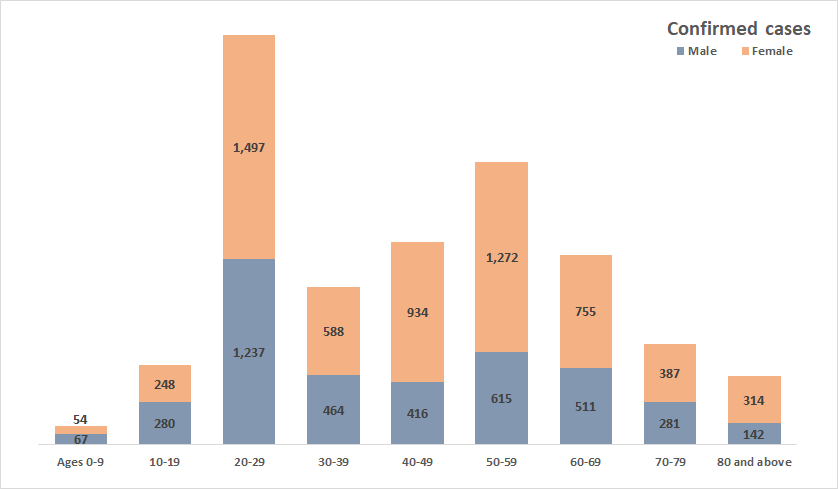
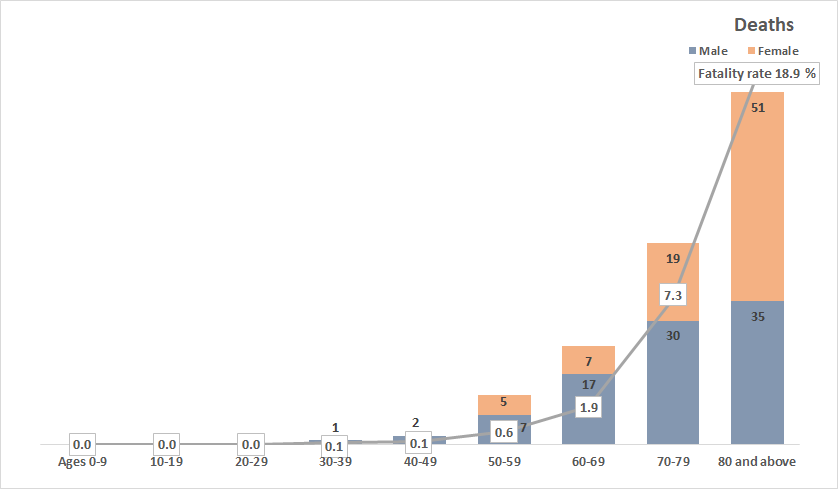
[Table 6: Age distribution of severe cases]
|
Age group |
Total |
Severe |
( |
% |
) |
Very severe |
( |
% |
) |
|
Total |
80 |
30 |
( |
100.0 |
) |
50 |
( |
100.0 |
) |
|
80 and above |
20 |
13 |
( |
43.3 |
) |
7 |
( |
14.0 |
) |
|
70-79 |
29 |
8 |
( |
26.7 |
) |
21 |
( |
42.0 |
) |
|
60-69 |
20 |
4 |
( |
13.3 |
) |
16 |
( |
32.0 |
) |
|
50-59 |
8 |
4 |
( |
13.3 |
) |
4 |
( |
8.0 |
) |
|
40-49 |
1 |
0 |
( |
0.0 |
) |
1 |
( |
2.0 |
) |
|
30-39 |
1 |
1 |
( |
3.3 |
) |
0 |
( |
0.0 |
) |
|
20-29 |
1 |
0 |
( |
0.0 |
) |
1 |
( |
2.0 |
) |
|
10-19 |
0 |
0 |
( |
0.0 |
) |
0 |
( |
0.0 |
) |
|
0-9 |
0 |
0 |
( |
0.0 |
) |
0 |
( |
0.0 |
) |
[Figure 10: Incidence rate by age group (per 100,000)]
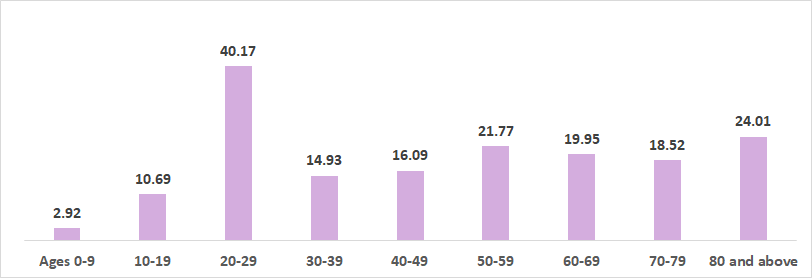
[Figure 11: Weekly trend of imported cases]
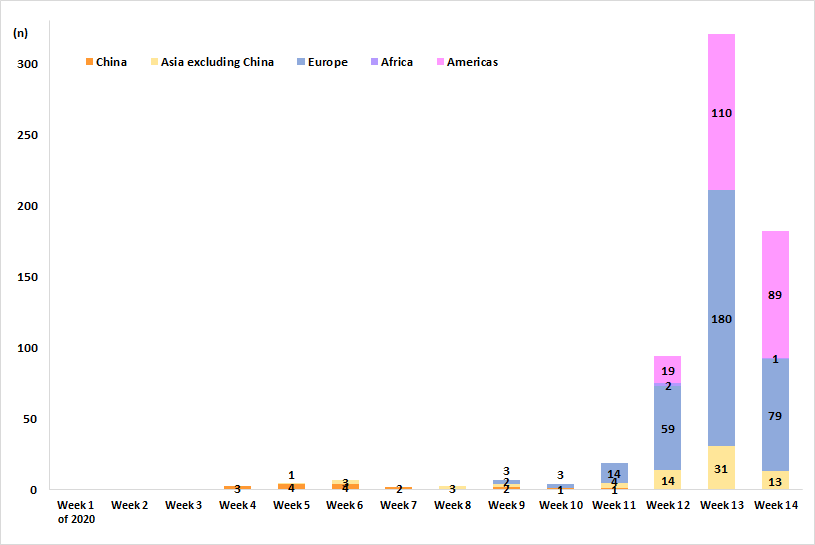
 This public work may be used under the terms of the public interest source + commercial use prohibition + nonrepudiation conditions
This public work may be used under the terms of the public interest source + commercial use prohibition + nonrepudiation conditions